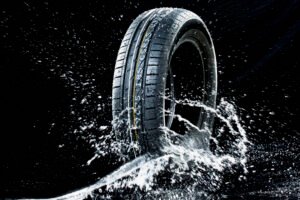For rally drivers, the choice and replacement of tyres are crucial decisions that impact both performance and safety on the course. Rally driving demands specific types of tyres, crafted to grip precarious surfaces at high speeds under a variety of conditions. Understanding when and why to replace your rally tyres is essential to ensuring optimal performance.
When to Consider Tyre Replacement
The lifespan of rally tyres is significantly influenced by the driving conditions and the type of terrain they encounter. For rally drivers, recognising the signs that a tyre needs replacing can be the difference between climbing the podium or being left in the dust. Here are key factors to consider:
- Visible Wear and Damage: Check for cracks, bulges, and other visible signs of damage. Rally stages often involve rough terrains and debris, which accelerate wear.
- Performance Deterioration: Loss of grip or increased slippage in corners can hint at a need for fresher tyres.
- Mileage: Keeping track of distance covered on both practice and competitive stages helps in anticipating tyre replacement intervals.
- Weather Changes: Transitioning seasons can necessitate a switch to tyres with compounds better suited to current weather conditions.
Selecting the Right Replacement Tyres
Not all tyres are a one-size-fits-all solution. Rally tyres need to be carefully selected based on the type of rally and expected conditions:
- Gravel: Ideal for loose surfaces, gravel tyres provide deep tread blocks to increase traction.
- Tarmac: Suited for paved routes, these tyres should balance grip and durability.
- Snow/Ice: Designed with specialised tread and sometimes studs, these tyres handle sub-zero conditions effectively.
Choosing the appropriate compound—super-soft, soft, medium, or hard—depends on the temperature ranges of expected conditions. For warmer temperatures, harder compounds are more durable; conversely, softer compounds excel at gripping in cooler weather.
Improving Tyre Performance
It’s not only about replacing tyres; maximising their performance can extend their effective lifespan. Here are strategies to consider:
- Manage Tyre Pressure: Ensure optimal pressures based on track conditions to maintain the ideal contact patch.
- Camber and Toe Adjustments: Fine-tuning these angles can significantly impact cornering grip and tyre wear.
- Monitor Tyre Temperature: Avoid overheating by managing driving style and vehicle setup adjustments specific to stage conditions.
In conclusion, careful tyre management and timely replacements are pivotal components of a successful rally strategy. With diverse conditions from one stage to another, ensuring you have the right tyre for every terrain and weather scenario unlocks your potential to outperform the competition.




